井口 大輔/Iguchi Daisuke
井口大輔(1975~)は、気鋭の若き陶芸家として、国内外で注目を集めている作家です。
栃木県真岡市出身の井口は、1998年に東北芸術工科大学芸術学部美術科を卒業後、栃木県の窯業指導所にて2年間研修生として学び、青磁で知られる浦口雅行(1964~)に師事しました。2002年に第4回益子陶芸展で入選すると、その2年後には真岡市に自身の窯を持ち、次々と作品を発表しては、受賞歴を重ねていきました。直近では、2014年の第54回東日本伝統工芸展にて東京都知事賞を、2019年の第14回パラミタ陶芸大賞展(有識者が選出した「時代を代表する陶芸家」の作品を展示し、一般来場者の投票で大賞を決めるコンテスト)にて大賞を受賞しています。井口は、さびのような独特の風合いを持つ自身の作品を「銹陶(しゅうとう)」、すなわちさびた陶器と呼んでいます。この「銹陶」では、成形して素焼きをした後の表面に、もみの灰を塗り、窯で焼きあげてからさらにワイヤーブラシで磨くという技法がとられています。石や木など様々な素材での試行錯誤を経て、長い歳月をかけてようやく、もみの灰を用いた今の作風にたどり着いたと言います。
さびた鉄を思わせる見た目は、派手ではないながらも、独特のやわらかさや気品を漂わせています。そうした雰囲気をもたらしているのが、もう一つの大きな特徴である、手びねりによる独特なフォルムです。丸みを帯びたあたたかな輪郭と薄くシャープな縁が併存しており、微妙に歪んだその造形から、型通りにならない「ゆらぎ」が生まれ、鑑賞者や使用者に不思議な心地よさを与えます。前述の、東京都知事賞を受賞した【銹変陶銀彩鉢】も、穏やかな波のごとくたゆたう、ゆったりとした形状を持ち、外側に施された銀の細やかな線文が、あたかもやわらかな布が器にかけられているような印象を作り出しています。また、内側と外側で色合いや質感が変化していることで、時間や空間の移ろいをも感じさせる点には、井口が目指す「ゆらぎ」の効果を見て取ることができます。
Daisuke Iguchi (1975-) is an emerging young ceramic artist who has been garnering attention both domestically and internationally.
Hailing from Moka City, Tochigi Prefecture, Iguchi graduated from the Department of Fine Arts at Tohoku University of Art and Design in 1998. Afterward, he spent two years as an apprentice at a kiln workshop in Tochigi Prefecture, under the tutelage of Masayuki Uraguchi (1964-), known for his celadon pottery. In 2002, he was selected for the 4th Mashiko Ceramic Art Exhibition, and two years later, he established his own kiln in Moka City. He has since been consistently presenting his works, accumulating numerous awards along the way. Most recently, he received the Tokyo Governor’s Award at the 54th East Japan Traditional Crafts Exhibition in 2014. In 2019, he won the Grand Prize at the 14th Paramita Ceramic Art Award Exhibition, where works by representative ceramic artists of the era selected by experts were showcased, and the Grand Prize was determined by votes from general visitors. Iguchi refers to his own works, which feature a unique texture resembling rust, as “Shuto” underglaze iron ceramics, signifying rusted ceramics. In this “Shuto” technique, after shaping and firing the unglazed pottery, the surface is coated with rice husk ash and then further polished with a wire brush before being fired again in the kiln. After years of trial and error with various materials such as stone and wood, Iguchi finally arrived at his current style using rice husk ash.
The appearance reminiscent of rusted iron exudes a unique softness and elegance, albeit not flashy. Another significant characteristic contributing to this ambiance is the unique form created through hand-building techniques. The warm, rounded contours coexist with thin, sharp edges, creating a subtle “Yuragi” (irregularity) in the form, which imparts a mysterious comfort to viewers and users alike. The “Shuhentoginnsaibachi” (Rusted Ceramic Silver-glazed Bowl), which won the aforementioned Tokyo Governor’s Award, embodies a gentle, undulating shape, with delicate silver lines on the exterior reminiscent of soft fabric draped over the vessel. Furthermore, the variation in color and texture between the interior and exterior evokes a sense of the passage of time and space, showcasing the “Yuragi” effect that Iguchi aims to achieve.
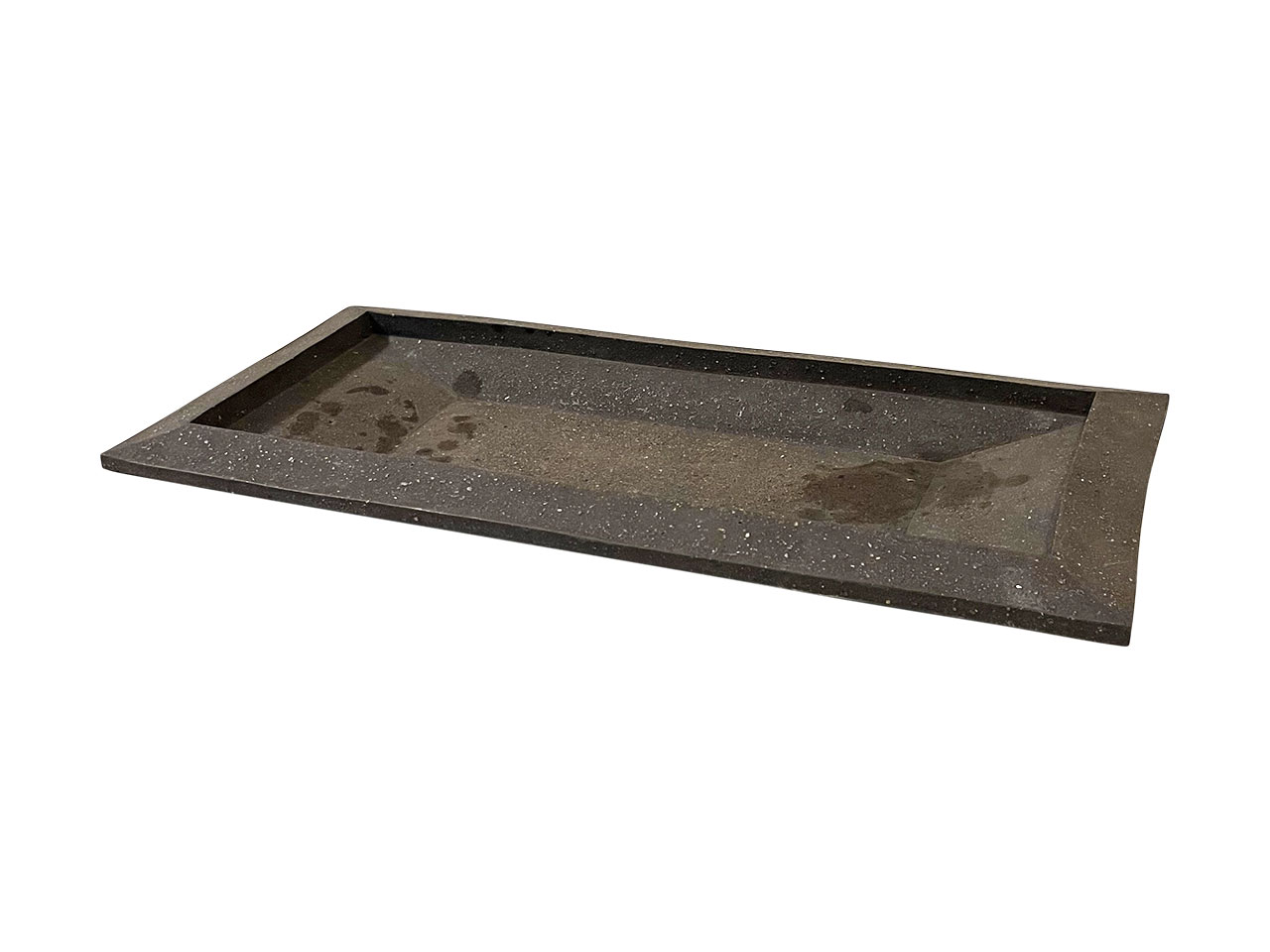
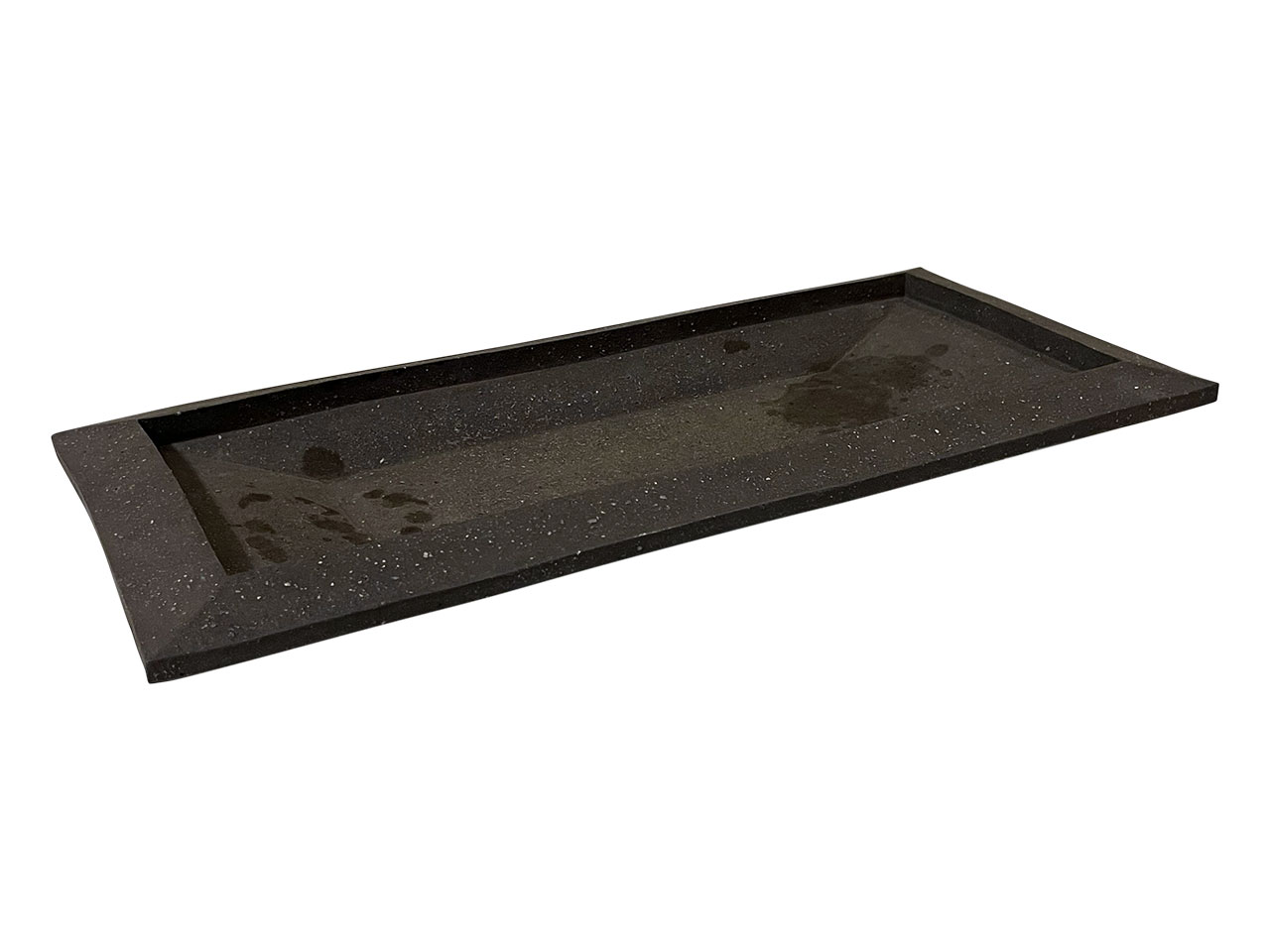
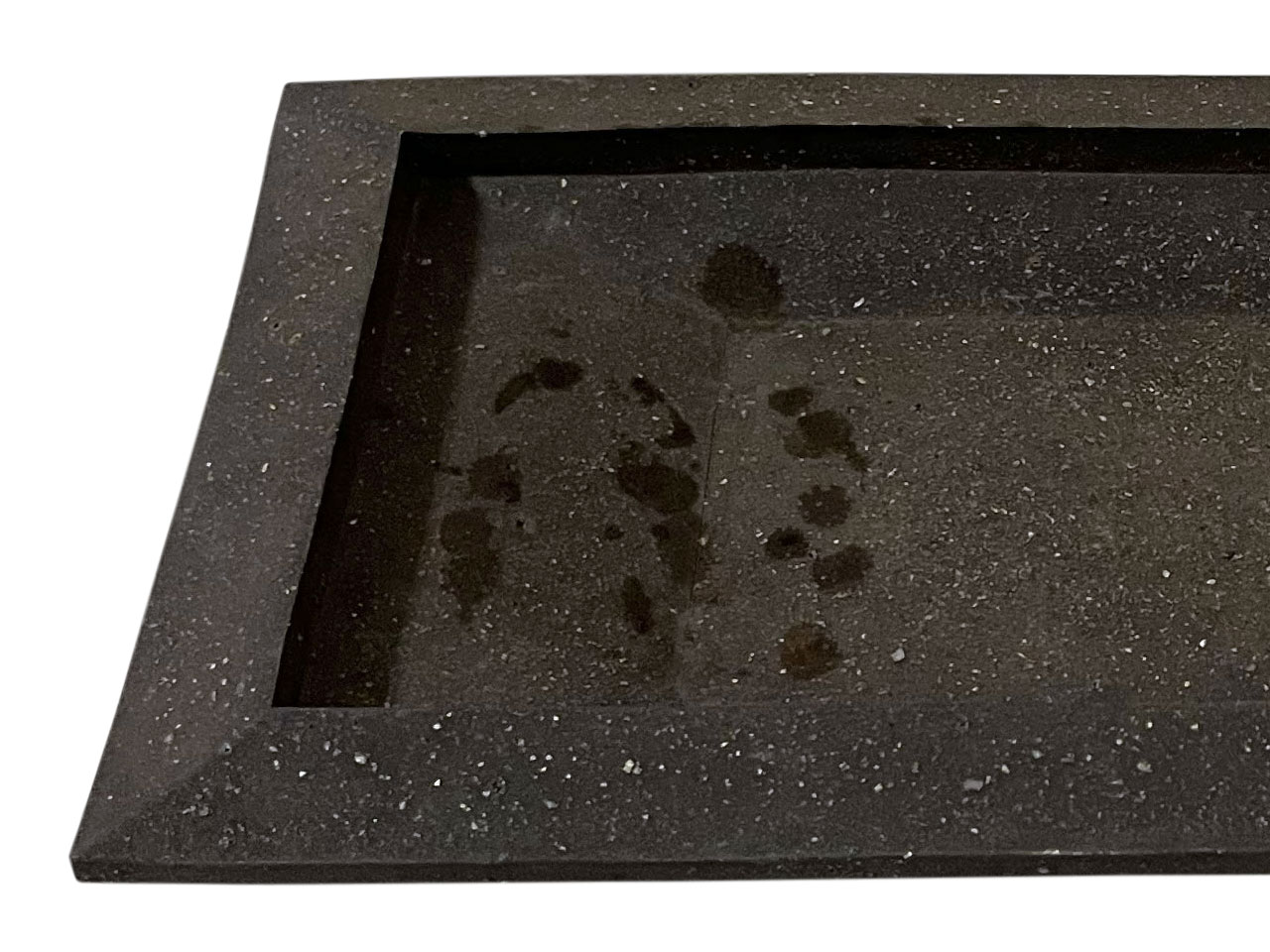
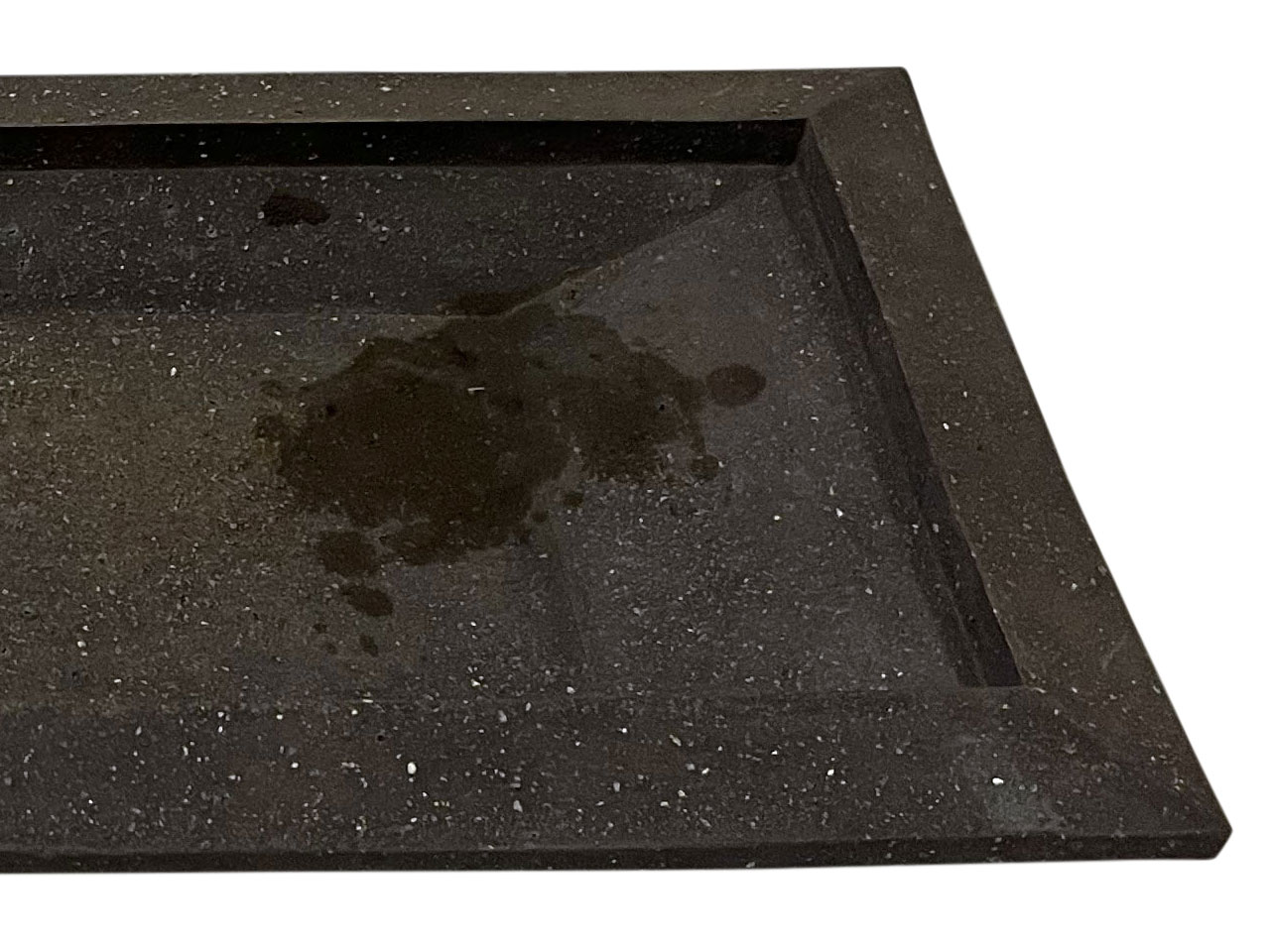
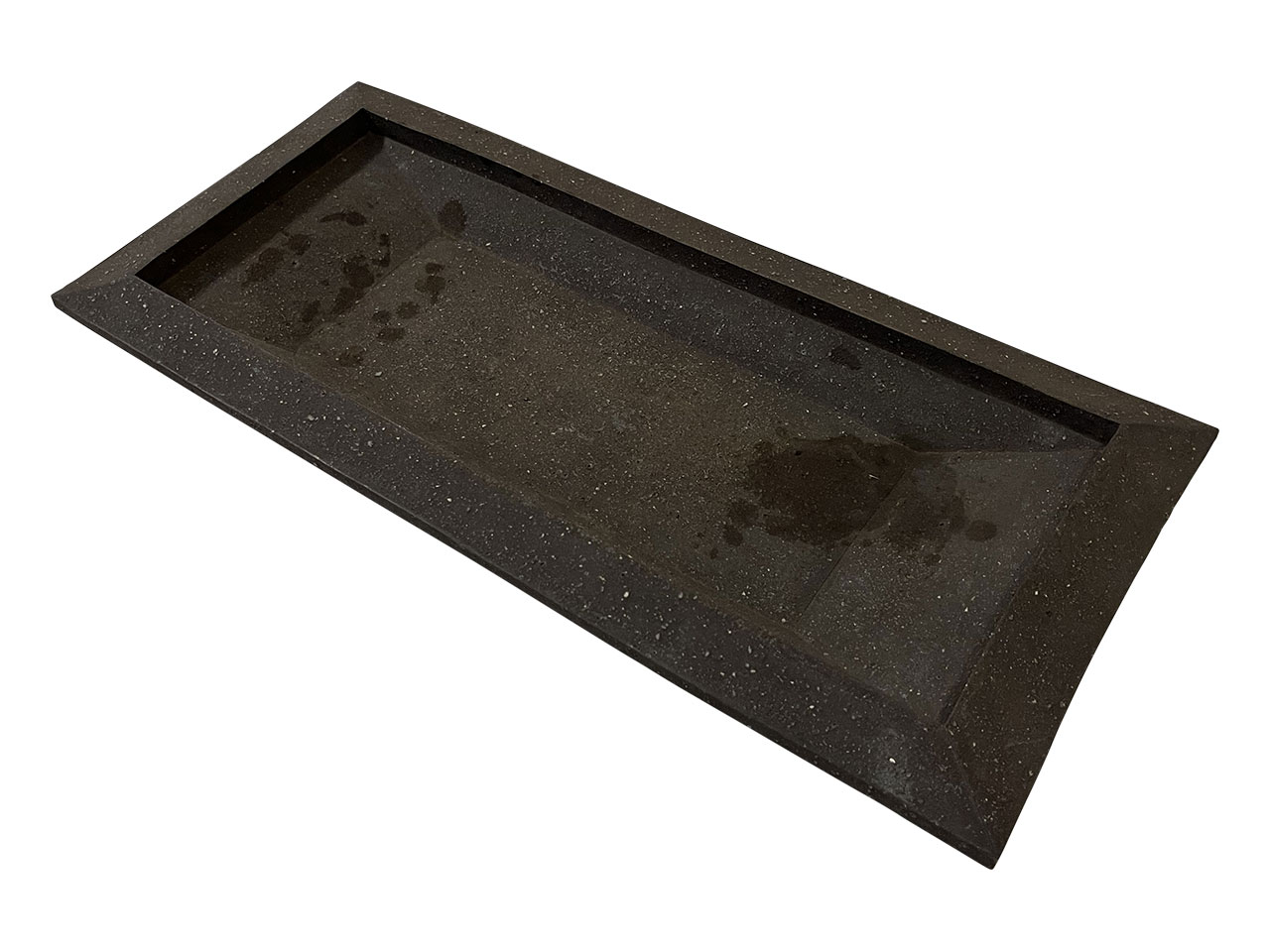
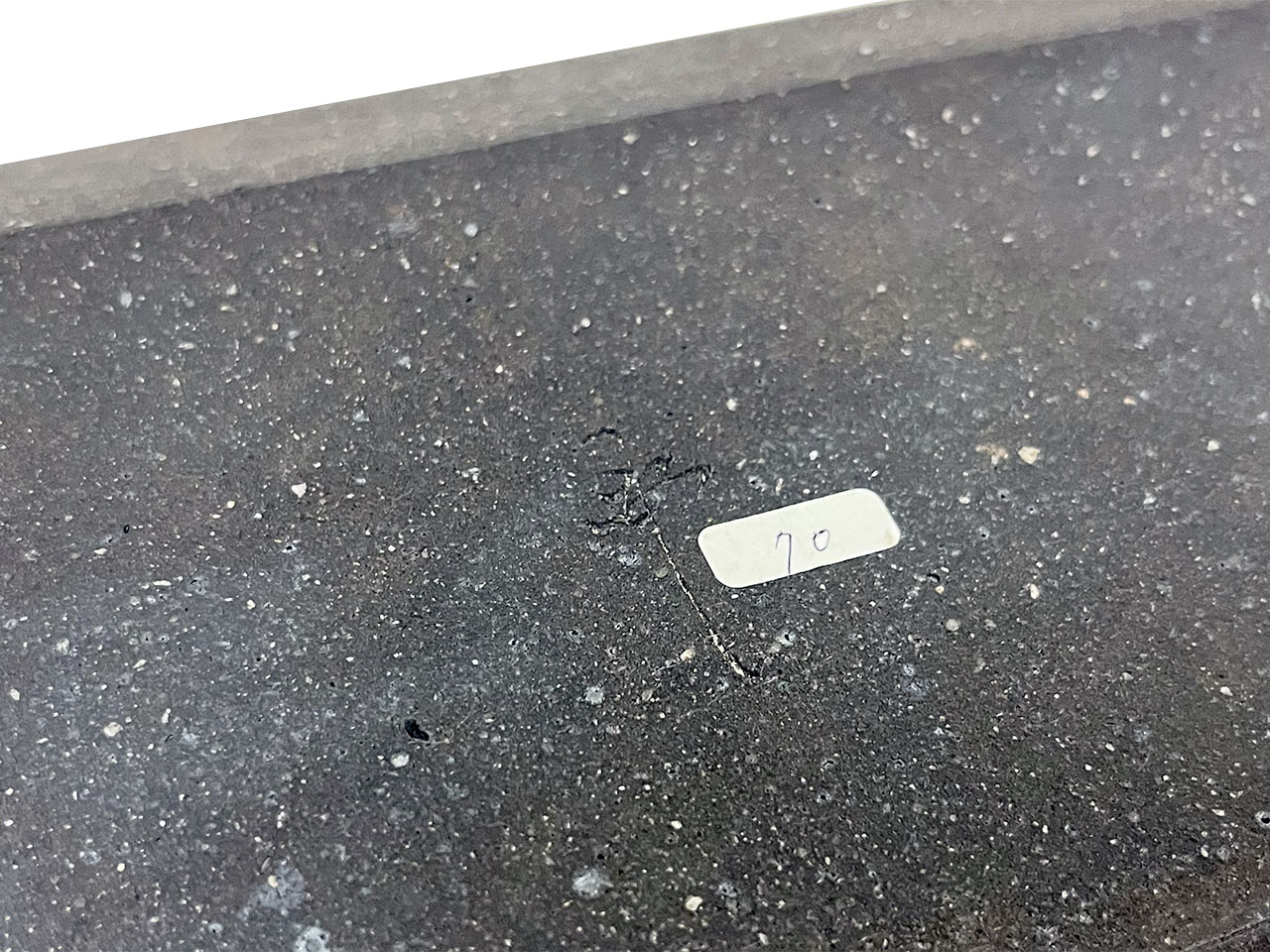
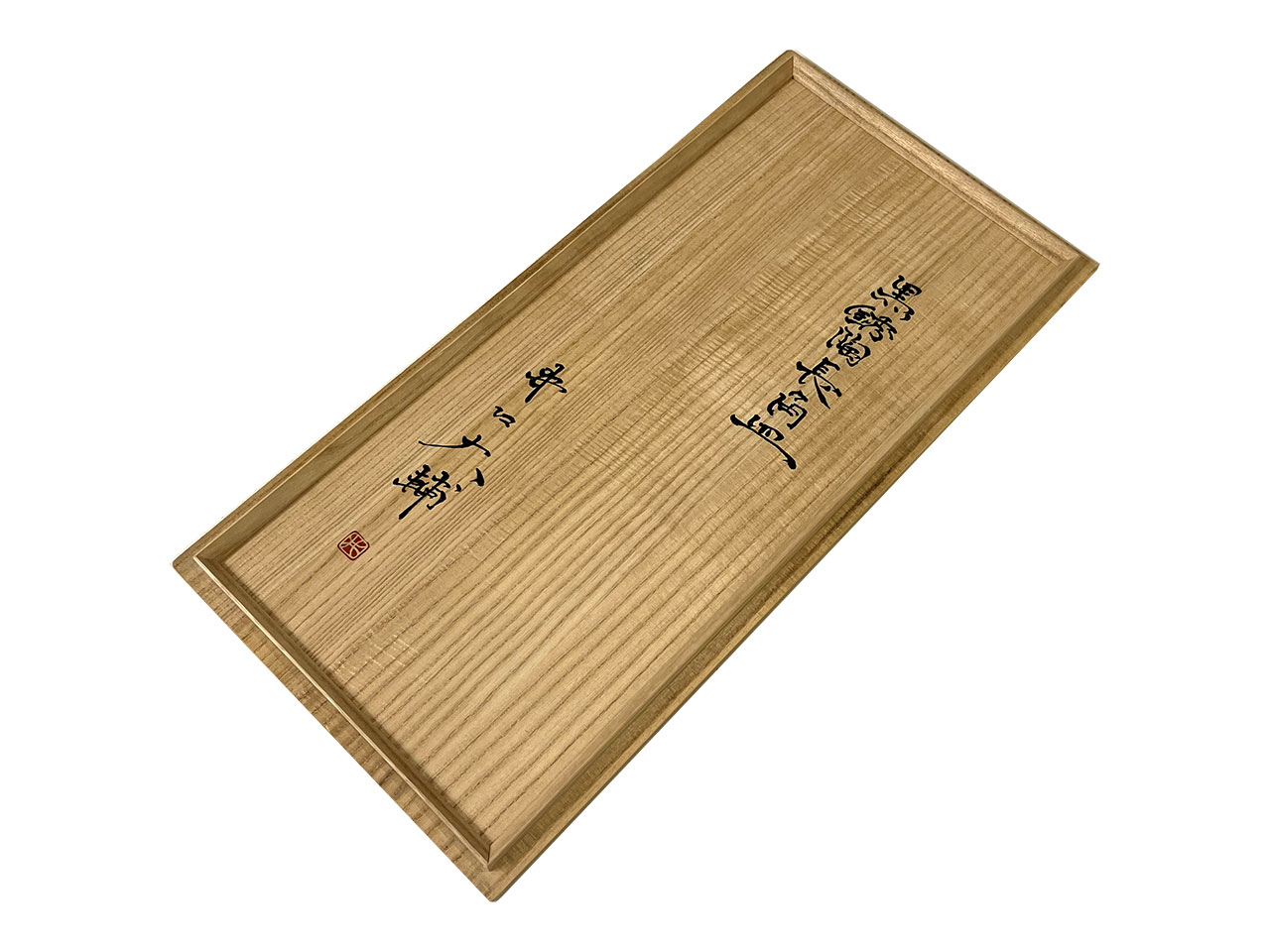
作品名:黒銹陶長角皿
サイズ:H4.5×W50.5×23.3cm(セラミック 共箱)
価格:SOLD OUT
価格は税抜き表示です

